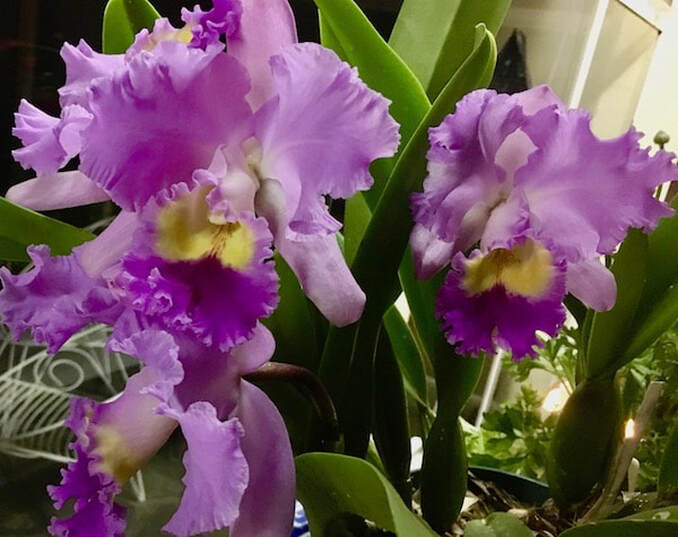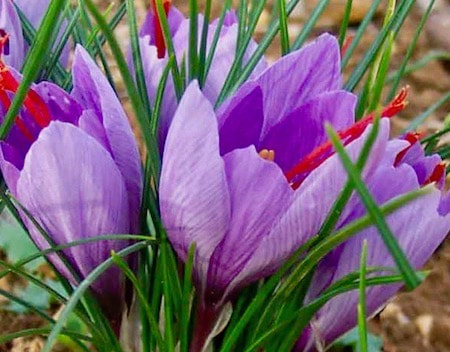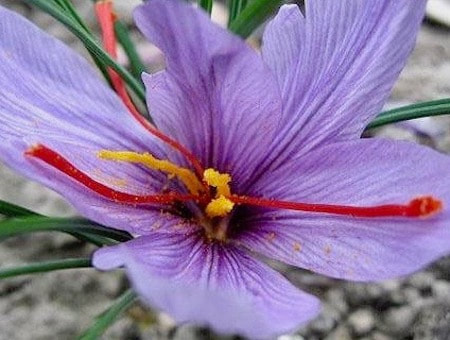|
Home from a week in Hobart, I was greeted by this magnificent display. The Cattleya (bought last year at the Royal Adelaide Show) had opened with 4 enormous blooms. Cattleyas are no longer fashionable but I adore their vulgarity and they're my orchid of choice. The popular phalaenopsis (the white, flat-leaved, S.E. Asian "moth" orchid) is a long lasting, good little trooper, pretty, but... These were the orchids used (circa 1950s) for a corsage offered to a dance date, worn high on the shoulder or even on the wrist. In the film of Proust's Remembrance of Things Past, Swann "flirts" with a Cattleya thrust in the bodice of Odette, his pulchritudinous mistress. Hobart is very accessible, with great art, great produce, great seafood, great markets and therefore good restaurants. The highlight for me (and possibly one of my best experiences ever) was meeting Ainstie Wagner, the lively, energetic, knowledgeable, executive chef of Tasmanian Government House who showed me around her domain. (Allowed into the vault to see the silver, the teapots, the salt cellars, asparagus servers, the salvers, the marrow spoons - not often called for - I was rendered speechless.) Then followed a walk around her ordered and immaculate kitchen, her store-room of preserves, the produce garden with its chickens, its soft fruit canes, its nut and fruit trees, its rows of rhubarb, spinach, carrots. She is also working on adding to their two crocus plants for their own saffron! A tale of two flowers. The Cattleya originated in Brazil where it grew wild in trees. (It's epiphytic i.e. it attaches itself but thrives independently.) It was brought to England in the early 1800s. British botanist explorers in fact found many flowers in South America to add to the English garden. The vanilla orchid (Vanilla Planifolia) has a similar shape, but very much smaller, about 12cm long, pale green and cream and grows as a vine. While the Cattleya flower will last sometimes six weeks, the vanilla orchid fades in a day, after which the vanilla bean, its fruit, develops. The vines must be checked daily. From Mexico, the explorer Cortez introduced vanilla to Europe in the early 1500s where is was an instant success. More and more plantings were gradually set up in Madagascar, Indonesia and Tahiti. Pollination by bees is erratic and hand pollination was developed in 1840 by a 12 year old slave, Edmond Albius, in Madagascar. So what with one thing and another, vanilla is time consuming to grow, very much in demand and therefore very expensive. It's a ubiquitous flavouring - think vanilla ice-cream. When my Cattleya flowers fade, I will carefully watch the development of the bean. It will not be a vanilla bean of course, but I will feel a connection. And so to the saffron crocus. This little crocus (Crocus Sativus) is just like the bulb you might plant at home, along with the daffs, hyacinths and snowdrops. It grows in clusters, has a lovely mauve flower, but stands out with its three (yes, three only) red stamens - the saffron. While you're unlikely to pick up a vanilla orchid at a nursery near you, it would be possible to find a supplier of saffron crocus bulbs. Harvesting however may deter your enthusiasm. (There are nonetheless some small Tasmanian growers.)
The saffron crocus spread across Europe from the middle east. It's grown extensively now in Iran, Spain and Portugal. The flowers are harvested then the stamens are collected, three at a time! Saffron is time consuming to grow, very much in demand and therefore very expensive. With saffron I am incredibly fortunate. I am suppled by my rug dealer (I said rug, not drug dealer) Javad Alikorki and by the artist Hossein Vallamanesh when either returns from a trip home to Iran. My advice for using vanilla or saffron? Choose your dish well and don't skimp. The Spaniards might throw saffron around with gay abandon in their paella but we might be more circumspect. But using not quite enough because you're "saving" it, is a total waste. "Saving" vanilla beans is also a waste. They might dry out. I have precious vanilla beans stored in castor sugar and the flavour permeates the container and will keep on doing so over a year. This way, the flavour can grace most sweet things. It's very effective. (And you may like to know that artificial "vanillin" is a flavour compound from the petrochemical industry - the devil's work!) P.S. The saffron-coloured robes worn by monks are not dyed with saffron (and never have been). Imagine the kilos required! When do you use vanilla? When do you use saffron? Comment or like - see the fine print below.👇
6 Comments
ROSA MATTO
10/9/2019 03:16:33 pm
Oh, stop it, you tease! Tell me now....I don't mind a long read.
Reply
Rosemary
10/9/2019 04:21:45 pm
Very envious of the tour of Hobart Government House, having once been to a reception there. Beautiful building, amazing setting. About to go to the local Madrid market and look for safffron.
Reply
Kym
11/9/2019 09:01:59 am
Once again Cath, very interesting
Reply
Leave a Reply. |
Categories
All
|



 RSS Feed
RSS Feed
